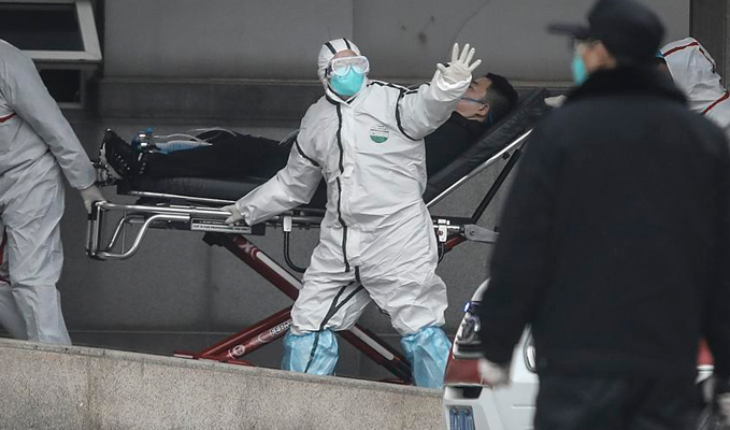Photography/ La Vanguardia
World.- WHO’s Emerging Disease Manager has warned of the “large number” of hoaxes and misinformation about the epidemic that began in China. We raisethe main questions about this virus, answered by reliable sources.
The epidemic caused by the new coronavirus 2019-nCov, which began in December in Wuhan, China, has been leaving behind a trail of official information mixed with speculation for weeks. The director of the World Health Organization (WHO), Tedros Adhanon, has not hesitated to state that the situation is “worrying” and “the risk is high”, especially because of the global spread potential of this virus.
Maria Van Kerkhove, WHO’s Head of Emerging Disease, has alerted her to the “large number” of hoaxes and misinformation about the epidemic and stressed the need for the media to report responsibly by reaching proven sources. In this report we raise the main doubts that this coronavirus raises, answered by experts.
Is it justified to worry?
“Of course,” Michael Ryan, WHO’s executive director, said at a press conference, “there’s a new virus that infects humans we don’t have a treatment or vaccine against.” But he also said that, thanks to China’s collaborative attitude, “we have the opportunity to contain this epidemic.”
Is it transmitting faster than other viruses, such as SARS?
“The new coronavirus is from the same family as SARS-CoV, which caused the 2002 epidemic,” Isabel Sola of the National Center for Biotechnology (CNB-CSIC) in Madrid tells SINC Isabel Sola.
The new coronavirus is similar to SARS, but this time the number of confirmed infected is growing much faster
The genomes of both coronaviruses are very similar. But this time the number of confirmed infected is growing much faster. In just over a month, China has reported more than 24,300 confirmed cases (24,551 worldwide) and 493 deaths*, while between 2002 and 2003, throughout the epidemic, SARS affected some 5,330 people (349 deaths) in China. “The rapid increase in the number of cases is worrying,” Ryan admitted.
Still, some of the difference in numbers may be because in this epidemic it is much easier and faster to diagnose the infected. Experts from other countries took very little time to dump genetic information on the virus, which allowed diagnostic kits to be developed in a few weeks.
WHO supports countries with fewer resources to access these techniques. “Thanks to all this we are seeing in real time the behavior of the epidemic,” Van Kerkhove said.
Medical control on the Beijing subway because of the threat of the coronavirus 2019-nCoV. The operators, dressed in white, take the temperature to anyone who wants to access the suburban. / Wikipedia
What is the mortality rate of this epidemic?
Current figures put it at around 2% infected, but WHO experts remember that “too soon” to know actual mortality, Van Kerkhove said, because it is unknown how the number of infected will evolve. “Surveillance is increasing in China and also on a global scale, the numbers may change.”
How is it transmitted?
The virus enters the airways – the infected emit it when they sneeze, for example. It is also transmitted by direct contagion, and it is known that the virus can stay on surfaces such as handrails and doorknobs for “short periods of time,” according to Van Kerkhove.
What are the symptoms?
The most common include coughing, sore throat, fever and feeling short of breath. In more severe cases, the infection can cause pneumonia, severe shortness of breath, kidney failure and death. More severe cases usually occur in elderly people, who have another disease or are immunocompromised.
Can an infected infecte get it before it show symptoms?
It is important to know if there may be contagion when the disease is incubating
In Germany there are cases from a person from China who only became ill upon returning to their country, which would indicate that the contagion occurred before they had symptoms.
Establishing whether there may be contagion when the disease is incubating – the maximum incubation period is estimated at two weeks – is important for prevention measures. However, “it is very difficult to identify cases of asymptomatic transmission in routine reporting data, that requires very specific field studies,” Ryan said.
What is the source of the new coronavirus?
It’s not known yet. Everything points to the use of a wild animal of one of the many species offered to eat at the Wuhan market, often slaughtered right there – a practice that disseminates fluids with high viral load. In SARS the source was the civet, and in MERS – the coronavirus that caused Middle East Respiratory Syndrome (MERS-CoV) in 2012 – a dromedary.
When will the peak of the epidemic occur?
It’s not possible to know yet. First, because information is lacking: without knowing how the epidemic originated and amplified the epidemic in Wuhan,” “we cannot put the current transmission dynamics in context,” Ryan explained.
Predictions cannot be made, and the evolution of the epidemic will depend on the measures taken: “The Ro number [el número de personas al que un infectado puede contagiar], which everyone is talking about, is positively or negatively affected by what we do, and therefore we must collectively decide what we do now,” Ryan said.
What is the risk of contagion in Spain?
If an imported case is detected in Spain, the impact on public health is considered limited
Information from the Ministry of Health at 29/01: “It cannot be ruled out that any cases imported into Spain from the risk zone appear. If this were to happen, the likelihood of secondary cases occurring in our country is estimated to be low at this time, as with the information available, the person-to-person transmission is not high and the early introduction of prevention and control measures would greatly reduce the risk.”
Therefore, the impact on public health, if an imported case is detected in our country, is considered limited. This risk assessment is constantly reviewed according to the information available.
When could there be a vaccine?
With optimism, it will take a year and a half to generate a vaccine against it
At least between half and a year, with a lot of optimism and despite the already numerous laboratories around the world working on it. One is the one directed by Luis Enjuanes, in the CNB, and of which Isabel Sola is part.
At the time of the SARS epidemic (2002-2004) this group managed to generate attenuated versions of this coronavirus, useful for a potential vaccine that ultimately failed to be tested in humans because the epidemic referred with public health measures.
Given the similarity between SARS-CoV and the new coronavirus, researchers have re-identifying relatively soon genes that become dangerous by 2019-nCov; it is these genes that need to be modified to obtain a dimmed version that does not cause the disease, but that does generate a defensive response.
Then you have to test the attenuated viruses in animal models. “It’s a job that takes months,” Sola tells SINC. Then the human trials would come.
Another group studying coronavirus in Spain is that of Júlia Vergara-Alert, researcher and veterinarian at IRTA-CReSA, in Barcelona. They have obtained potentially useful results for a vaccine based on fragments of a protein from the virus cover.
translated from Spanish: Facts to Survive the Coronavirus News Crisis
February 7, 2020 |





